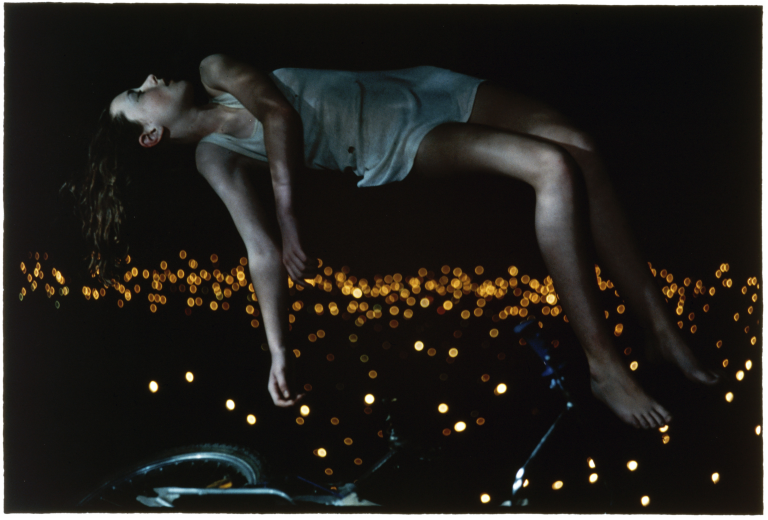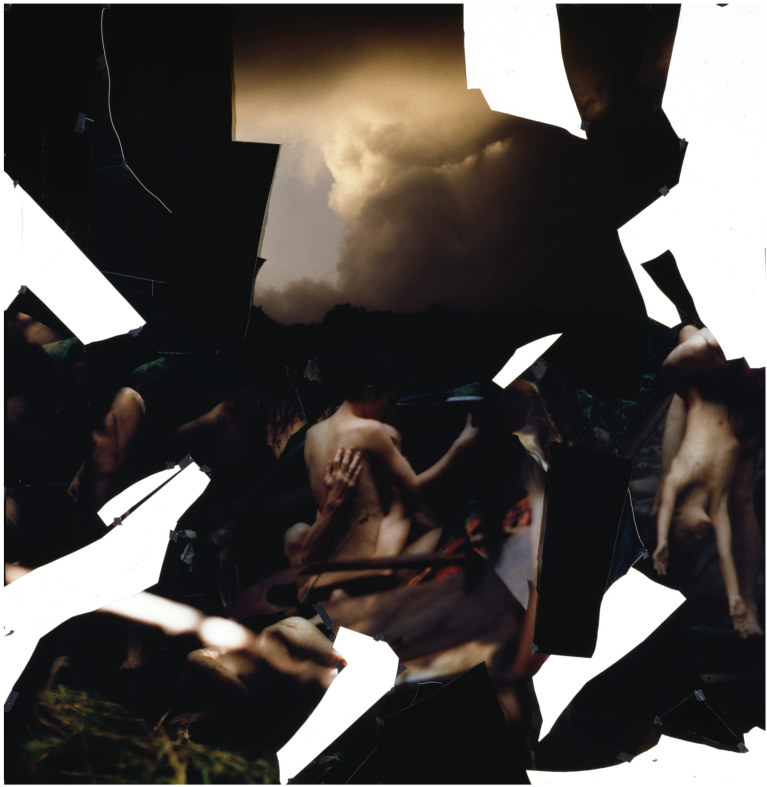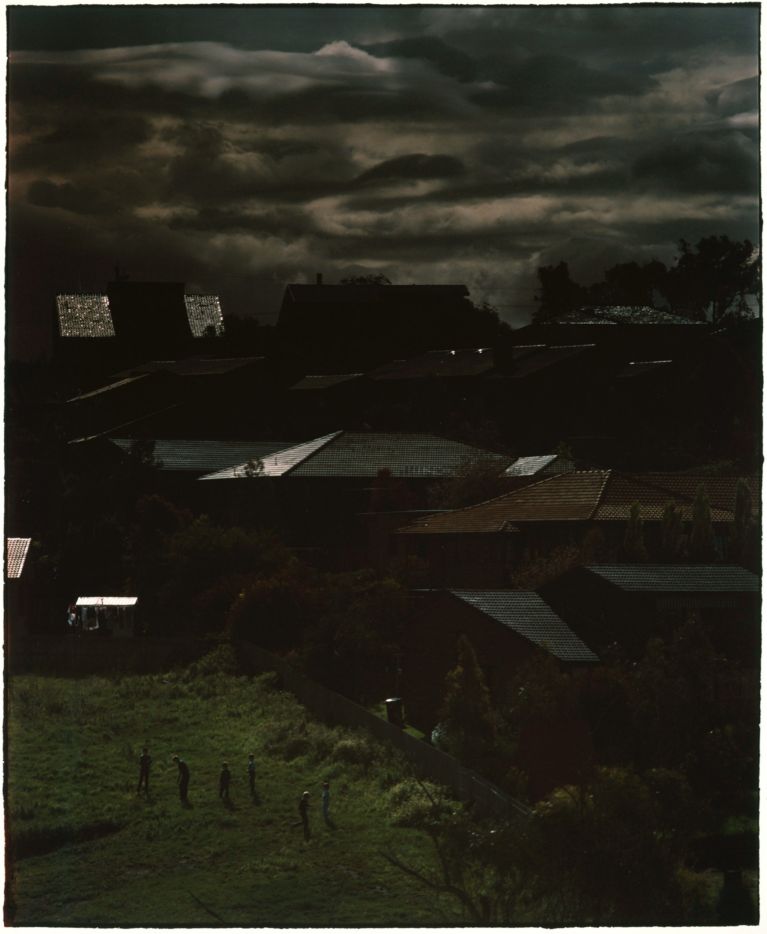Roslyn Oxley9 Gallery notes that:
“Bill Henson is one of Australia’s most distinguished artists. His darkly enigmatic photographs have been exhibited extensively both in Australia and around the world over a period of more than four decades. An internationally acclaimed artist, Henson’s images encompass many themes.” He has also been highly controversial for his imagery of the young.

James McArdle remembers Henson as a fellow student at Prahran in 1974-5 and remarks on a 2017 Henson exhibition at the National Gallery of Victoria, the first public showing, nearly ten years on, of his controversial nude, or semi-nude photographs since the great controversy when Roslyn Oxley Gallery in Paddington, Sydney, distributed email invitations to the opening of their exhibition of his work, on 22nd May 2008. What a scene; despite having shown such imagery for years without a comment, it was the email that nearly undid Henson!
“I can remember receiving the email at work, and being somewhat shaken by its image of a naked young girl, struck by the feeling that it was utterly out-of-place on an email, and thinking it would cause trouble as it was indiscriminately broadcast to too many people, some of whom would be bound to take offence. By midday that day it was a scandal on which even I, a lecturer in a remote regional university, was asked to make a judgement call to the media.

“That has hard. Bill Henson was in my class at Prahran. He dropped out of after securing an exhibition at the National Gallery of Victoria. His lecturers agreed that there was no more they could offer him; he had launched his career.

“As a student at Prahran he was the youngest in the class, a quiet, apparently shy, serious fellow who, if the term were circulating in 1974/5, would have been labelled ’emo’. I remember his dark unpopulated domestic interiors, and suggestions in class that, as great as they were, they were like empty film sets. They were already redolent with the sense of passionate yearning that marks his work.
“Our Senior Lecturer, renowned Melbourne portraitist Athol Shmith, arranged for students to photograph at the ballet school, at what is now Melbourne University’s Victorian College of the Arts (where Henson later taught). I believe it was there, or at another shoot arranged by Athol, that Bill began to photograph young ballet students and to engage models for his photographs which were snapped up by Jennie Boddington, inaugural Curator of Photography at the National Gallery of Victoria, for Henson’s first solo show in 1975. It was an extraordinary accolade and acknowledgement of his talent; he was still nineteen.
“At the time, he worked selling books on ballet and art in The Bookshop of Margareta Webber in the office block at 343 Little Collins Street, Melbourne, while I polished the floors in the corridor outside, one of several cleaning jobs that were paying my way through my photography studies, and a divorce.
“It was the era of David Hamilton, who died last year on 25 November, a British photographer who also made photographs of young dancers and later soft-focus nudes of young women and girls, which were featured in a number of his books. Hamilton’s was work that I and most of my fellow students agreed was just too saccharine, and somewhat gauche.
 “Bill’s photographs are not that, and neither are they ever soft-focus. The besmirched and humid appearance of his subjects is a characteristic of his pictures. That look is in part due to the fact that they are actually perspiring their way through marathon shoots, feats of endurance for both photographer and model during which he searches for just the right moments of teenage reverie and psychological abstraction that no doubt he remembers of his own adolescence, that he strives to recapture.
“Bill’s photographs are not that, and neither are they ever soft-focus. The besmirched and humid appearance of his subjects is a characteristic of his pictures. That look is in part due to the fact that they are actually perspiring their way through marathon shoots, feats of endurance for both photographer and model during which he searches for just the right moments of teenage reverie and psychological abstraction that no doubt he remembers of his own adolescence, that he strives to recapture.
“In all these years, in varied projects and through countless exhibitions, all of them carefully staged spectacles, there is undeniably a consistent Henson vision that is now nearly forty-five years in the making.
“Beyond the figure are landscapes and cityscapes. Sometimes these are presented as companion pieces to the figures. In other exhibitions they have been montaged and arrayed around the young subjects in panoramic taped collages on ply. Sometimes they are present in just the light enveloping the model. It is light far removed from anything like studio lights; it is moonlight, streetlight, houselight extending into a garden, city lights glimmering from a valley below.
“Landscape in Henson’s imagery is rarely mentioned by the press, but that is the element I remember from his student days; before he added the figure. He sees it in crepuscular tones, sombre and low-key with breaking skies. The steep, oblique telephoto perspectives render everything as if it were the flats or backdrop of a stage, even the most unlikely suburban street. These are the settings which tell you that the figures are actually those of dancers, with as much to do with sordid, everyday life as those in classical ballet performances, who traditionally are dressed to look naked also.
“Within that landscape you might see music, like the Kindertotenlieder of the title of the Germanic image below, music of Athol Smith’s beloved Mahler, plaintively sung by Janet Baker, that he often played to us in class or at legendary parties in his apartment, the Song of Dead Children, of childhood now lost for which Henson’s images are a memento.

“You may not like Mahler, and may not respond to Henson’s imagery; to some it is anachronistic, fin-du-vingtième-siècle academism, reminiscent of John Reinhard Weguelin’s or Edward Bisson’s of the turn of the previous century. However, the stridently negative reactions to these works, the accusations of child abuse, invariably come from those who see them out of the context they require to be understood.”

Bill Henson (1994-95) Untitled , type C photograph, adhesive tape, pins, glassine, 250 x 244.3 cm

Roslyn Oxley9 Gallery also reports that “The NGV has now acquired over 100 works by Henson, the most significant of any public institution. Henson represented Australia at the 46th Venice Biennale in 1995. His photographic works have been exhibited extensively both locally and internationally over an incredible 45-year career. Henson’s seminal work is held in every major public collection in Australia and numerous important museum collections worldwide, including the Bibliotheque Nationale de Paris; Museo Nacional Centro de Arte Reina Sofía, Madrid; San Francisco Museum of Modern Art, USA; Los Angeles County Museum of Art, USA; Denver Art Museum, USA; Houston Museum of Fine Art, USA; Sammlung Volpinum, Vienna, Austria; Museum Moderner Kunst (MUMOK), Stifting Ludwig Wien, Vienna; Montreal Museum of Fine Arts, Canada; Tate Collection, London; and the Solomon R Guggenheim Museum, New York.”
[NOTE: These biographies are a work-in-progress for which primary research is preferred, but since not all the subjects are living or contactable, they may rely on a range of secondary or tertiary references. If you are, or if you know the subject, please get in touch. We welcome corrections, suggestions, or additional pertinent information in the comment box below or by contacting us at links here]

16 thoughts on “The Alumni: Bill Henson”